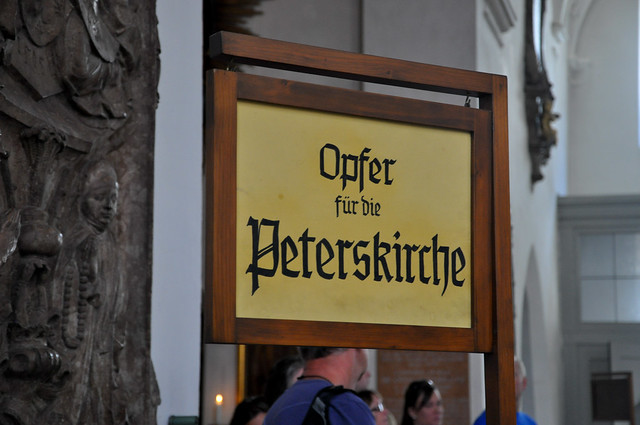
Visitámos a igreja á segunda tentativa porque na primeira estava a celebrar-se a missa. Logo no inicio da nossa visita um quadro com várias fotografías captou a minha atenção, nelas a Peterskirche estava práticamente destruída pelos bombardeios da Segunda Guerra Mundial. Em Dezembro de 1944 o interior desta igreja ficou reduzida a cinzas mas a sua estrutura exterior e principalmente a fachada conseguiram sobreviver.
We visited the church on our second attempt because the in the first it was celebrating mass. Early on in our visit a framework with several photographs captured my attention in them Peterskirche was virtually destroyed by the bombings of World War II. In December 1944 the interior of this church was reduced to ashes but most of it's exterior and facade survived.
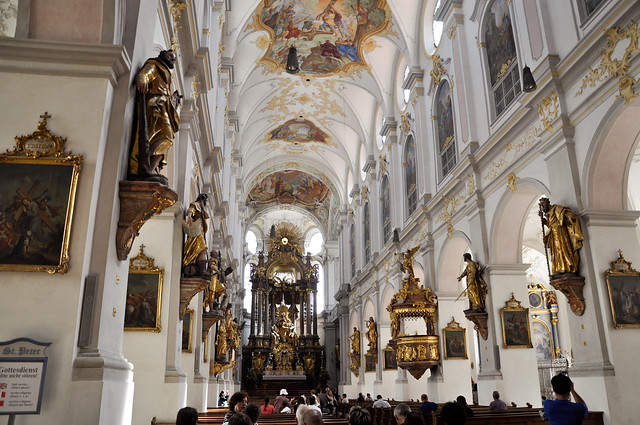


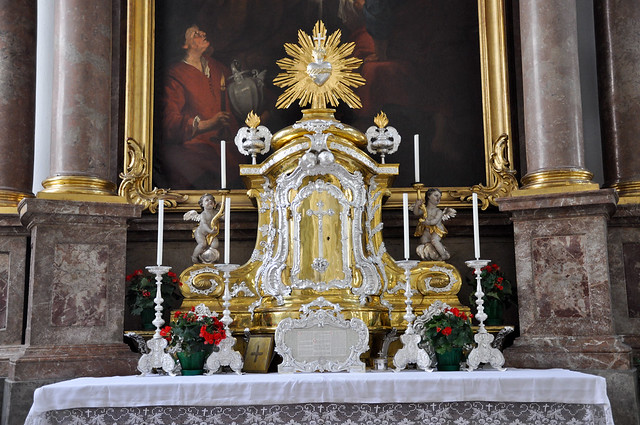
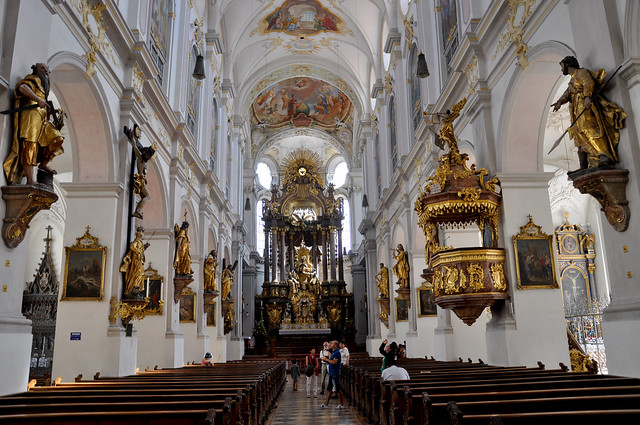


A Torre (ver post aqui) que visitámos e que oferece uma das melhores vistas da cidade foi reconstruída e inaugurada em 1950 e para celebrar os músicos de St. Peter tocaram várias músicas desde o topo. Dizem que a primeira igreja que existiu neste local era de madeira e foi construída por monges, mais tarde no século XIV foi totalmente destruída por um grande incêndio e voltaram a reconstruí-la.
Diria que a história de Peterskirche é de sobrevivencia, foi tantas vezes ao chão mas conseguiu sempre levantar-se. O seu interior, cheio de luminosidade contém peças de varios artistas influentes como os frescos de Johann Baptist Zimmermann que foram restaurados em 2000 quando a reconstrução da igreja ficou concluída. Contém ainda pinturas de Jan Polack e esculturas do artista Erasmus Grasser (XV).
Uma das principais atracções da igreja é o esqueleto da Santa Munditia, procurei saber mais sobre a sua história mas pouco se sabe, apenas que foi encontrada numas catacumbas em Roma e é considerada uma mártir cristã. Ver o seu esqueleto decorado dentro de um túmulo em vidro deu um toque mais mórbido á nossa visita.
A entrada é gratuita.
The Tower (see post here) that we visited and that offers the best views of the city was rebuilt and inaugurated in 1950, to celebrate it the musicians of St. Peter played several songs from the top. They say that the first church that existed in this place was made of wood and was built by monks, later in the fourteenth century it was totally destroyed by a great fire and rebuilt.
I would say that the story of Peterskirche is one of a survival it was often in the ground but always managed to get back up. The interior, filled with light contains several pieces of influential artists such as the frescoes by Johann Baptist Zimmermann which were restored in 2000 when the reconstruction of the church was completed. It also contains paintings by Jan Polack and sculptures of artist Erasmus Grasser (XV).
One of the main attractions of the church is the skeleton os Saint Munditia, I wanted to know more about her history but little is known, only that it was found in catacombs in Rome and is considered a Christian martyr. To see her decorated skeleton within the glass tomb gave a more morbid to our visit.
Admission is free.
I would say that the story of Peterskirche is one of a survival it was often in the ground but always managed to get back up. The interior, filled with light contains several pieces of influential artists such as the frescoes by Johann Baptist Zimmermann which were restored in 2000 when the reconstruction of the church was completed. It also contains paintings by Jan Polack and sculptures of artist Erasmus Grasser (XV).
One of the main attractions of the church is the skeleton os Saint Munditia, I wanted to know more about her history but little is known, only that it was found in catacombs in Rome and is considered a Christian martyr. To see her decorated skeleton within the glass tomb gave a more morbid to our visit.
Admission is free.





Our guide of:

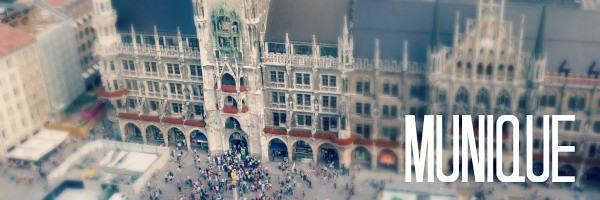
Sem comentários:
Enviar um comentário